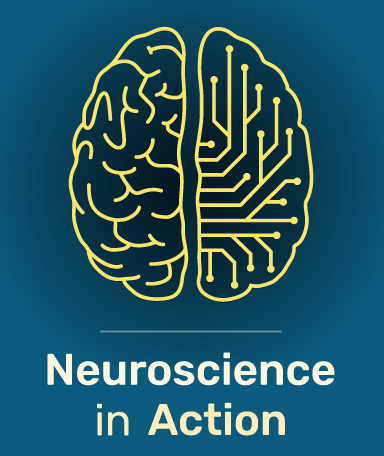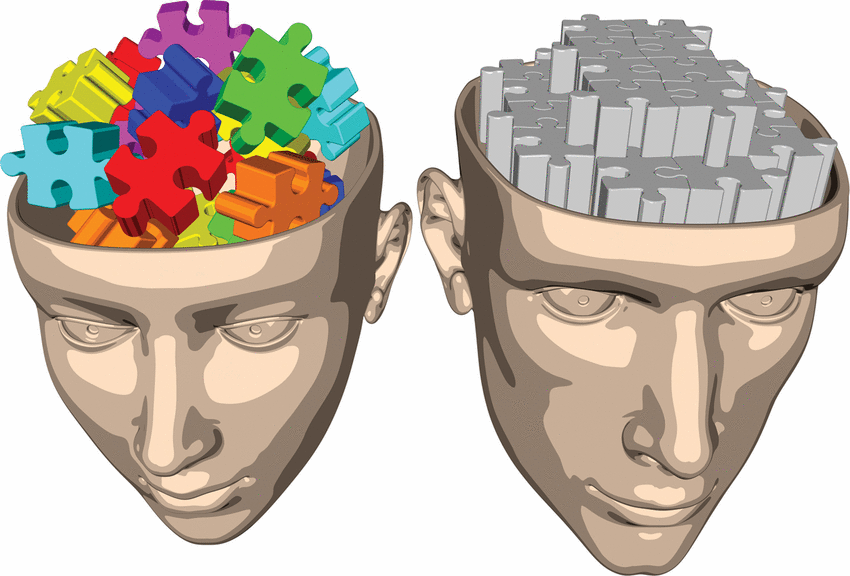Chapter 1. Auditory System: How the Ears Process Sound
Auditory System: How the Ears Process Sound
By:
A slamming door, a buzzing bee, a crying baby, a strummed guitar, an overheard conversation: Sound enters our ears as soundwaves, but how are those soundwaves converted into a form that our brains can process? In this activity you will learn about the functional anatomy of the auditory system, from the ears to the cortex.
After completing this activity, you should be able to:
- List the structures of the ear and their functions.
- Describe the conversion of sound waves to nerve impulses.
- Trace the auditory pathway for sound.
This activity relates to the following principles of nervous system function:
- Principle 6: Brain Systems Are Organized Hierarchically and in Parallel
- Principle 7: Sensory and Motor Divisions Permeate the Nervous System
- Principle 9: Brain Functions Are Localized and Distributed
The ear collects sound waves from the surrounding air and converts their mechanical energy to electrochemical neural energy, which is then transferred to the brain. The ear can be divided into three regions: the outer ear, middle ear, and inner ear. Let’s learn more about each of these regions.
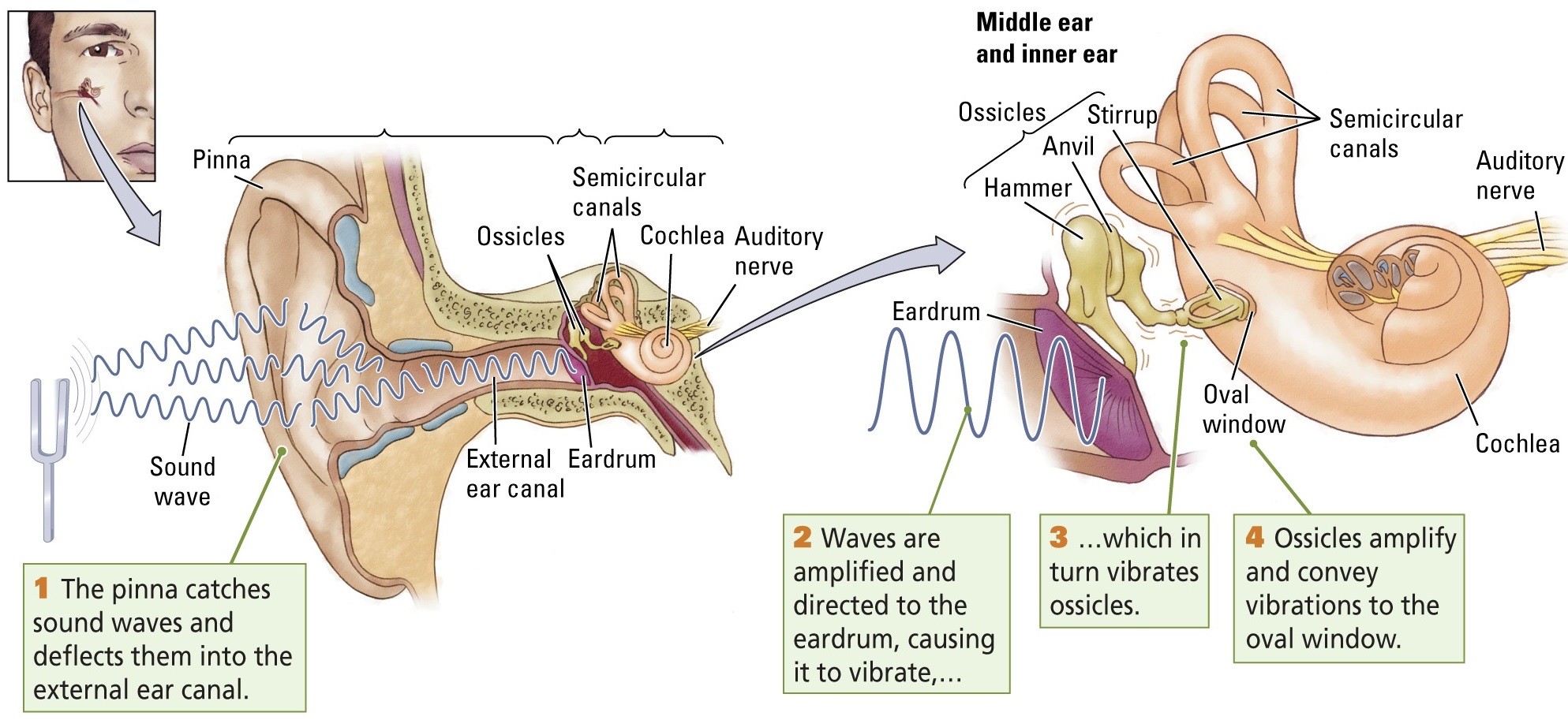
Outer ear
The structures of the outer ear include the pinna, the external ear canal, and the outer side of the eardrum.
The outer ear is responsible for collecting sounds and funneling them to the middle ear.
Middle ear
The structures of the middle ear include the inner side of the eardrum, the ossicles, and the oval window.
Sound waves are directed from the outer ear to the eardrum, causing it to vibrate.
The vibration of the eardrum in turn causes the ossicles to vibrate. As the ossicles vibrate, they convey vibrations to the oval window.
The middle ear is therefore responsible for amplifying the signal from the incoming sound waves and passing that on to the inner ear.
Inner ear
The structures of the inner ear include the cochlea, the auditory nerve, and the semicircular canals (although the semicircular canals do not have a role in audition).
The vibration of the oval window sends waves through the fluid-filled cochlea.
The cochlea contains the auditory receptor cells—the hair cells—and is responsible for transducing (converting) an auditory signal into a neural signal.
Fill in the blanks using the word list below. Note: You will not use all the terms.
Note: you must choose all answers before proceeding.
Question
1. Sound waves in the environment are collected by the and funneled into the
before arriving at the eardrum.
2. The tiny bones of the middle ear are the hammer, anvil, and stirrup, collectively called the
.
3. The ossicles vibrate against the , causing vibrations in the
.
4. A sound wave is converted into a neural signal in the cochlea and then transferred to the brain via the
.
How does the inner ear transduce (or convert) a mechanical signal produced by a sound wave into a neural signal? The answer lies in the anatomy of the cochlea. The cochlea is filled with lymphatic fluid, and within the cochlea is an important structure called the basilar membrane. The basilar membrane is narrow and thick at the base (closest to the oval window) and is wide and thin at its apex. The difference in the size and shape of the basilar membrane is important in how the basilar membrane responds to different frequencies of sound.
Let’s see how the basilar membrane responds to different sounds. Pay attention to where the largest displacement occurs along the membrane.
The Continue button will appear after the animation have been played.
As you can see, different frequencies of sound (different pitches) cause a peak displacement at different regions along the length of the basilar membrane. This important feature is one of the ways the auditory system distinguishes different sounds.
Embedded in the basilar membrane are two kinds of hair cells: the inner hair cells and the outer hair cells. The inner hair cells act as the auditory receptor cells, while the outer hair cells function to sharpen the basilar membrane’s responses to specific frequencies. The hair cells are topped with filaments, called cilia, that are embedded in the overlying tectorial membrane.
Now let’s see how the movement of the basilar membrane leads to transduction.
[Insert animation 10-2]
When a sound wave enters the cochlea, a specific region of the basilar membrane is maximally displaced, according to the frequency of the sound wave. The movement of the basilar membrane causes the tectorial membrane to move as well, resulting in a shearing force on the cilia of the hair cells. The movement of the cilia in one direction will cause depolarization of the hair cell, an increase in the activity in the auditory neurons, and movement of the cilia in the opposite direction will cause hyperpolarization, a decrease in the activity in the auditory neurons.
If you were to present a high-frequency tone, where would you expect the largest displacement of the basilar membrane? Why?
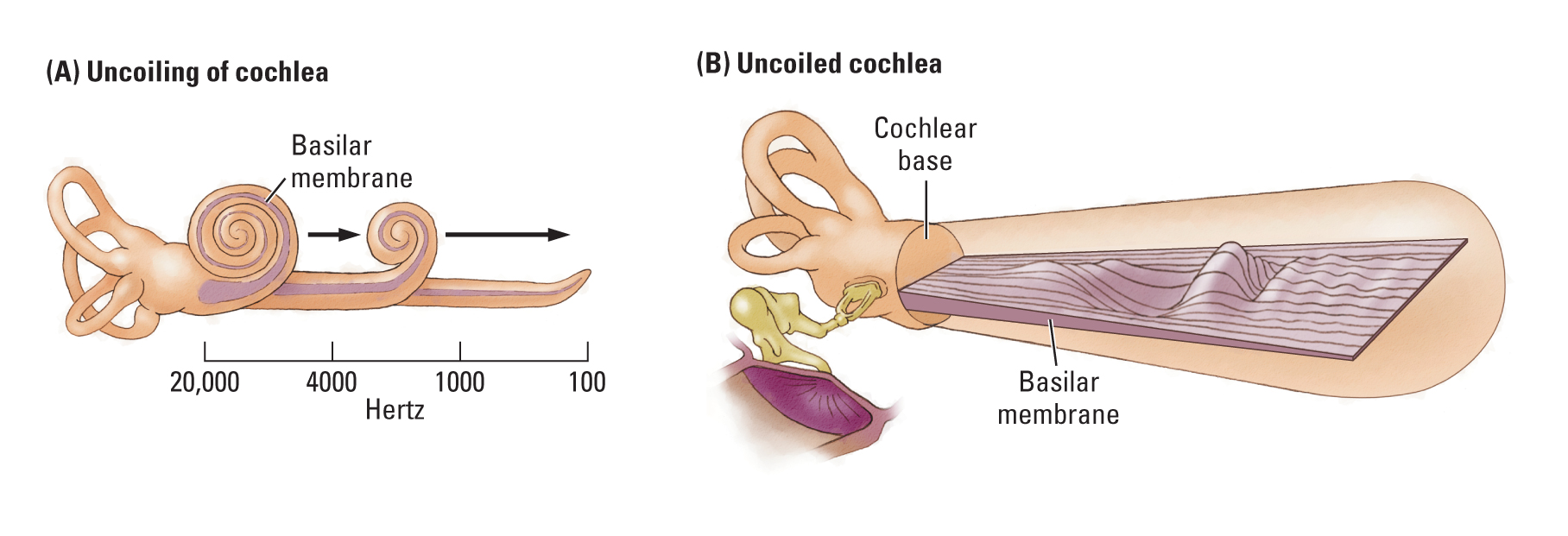
Question 1.
Y7XxM02sErG18w4JIYir5oGri4DGa9VRfqhB0RPKtW3j4keF1k0iDK100M45h19L2FTGHARNNLttKIDtj9ppoPWEpYk=Your answer has been provisionally accepted. You'll get full credit for now, but your instructor may update your grade later after evaluating it.
After information leaves the inner ear, where does it go? As neural signals make their way from the ear, they go through a number of specialized nuclei in the brainstem before reaching the cortex. This image shows how information travels from the left ear to the auditory cortex. Notice that the auditory information crosses to the contralateral (opposite) hemisphere at the level of the hindbrain and midbrain but then recrosses in the thalamus. In this way, the information from each ear reaches both hemispheres.
Explore each major region along the auditory pathway to learn more about how auditory information travels from the ear to the brain.
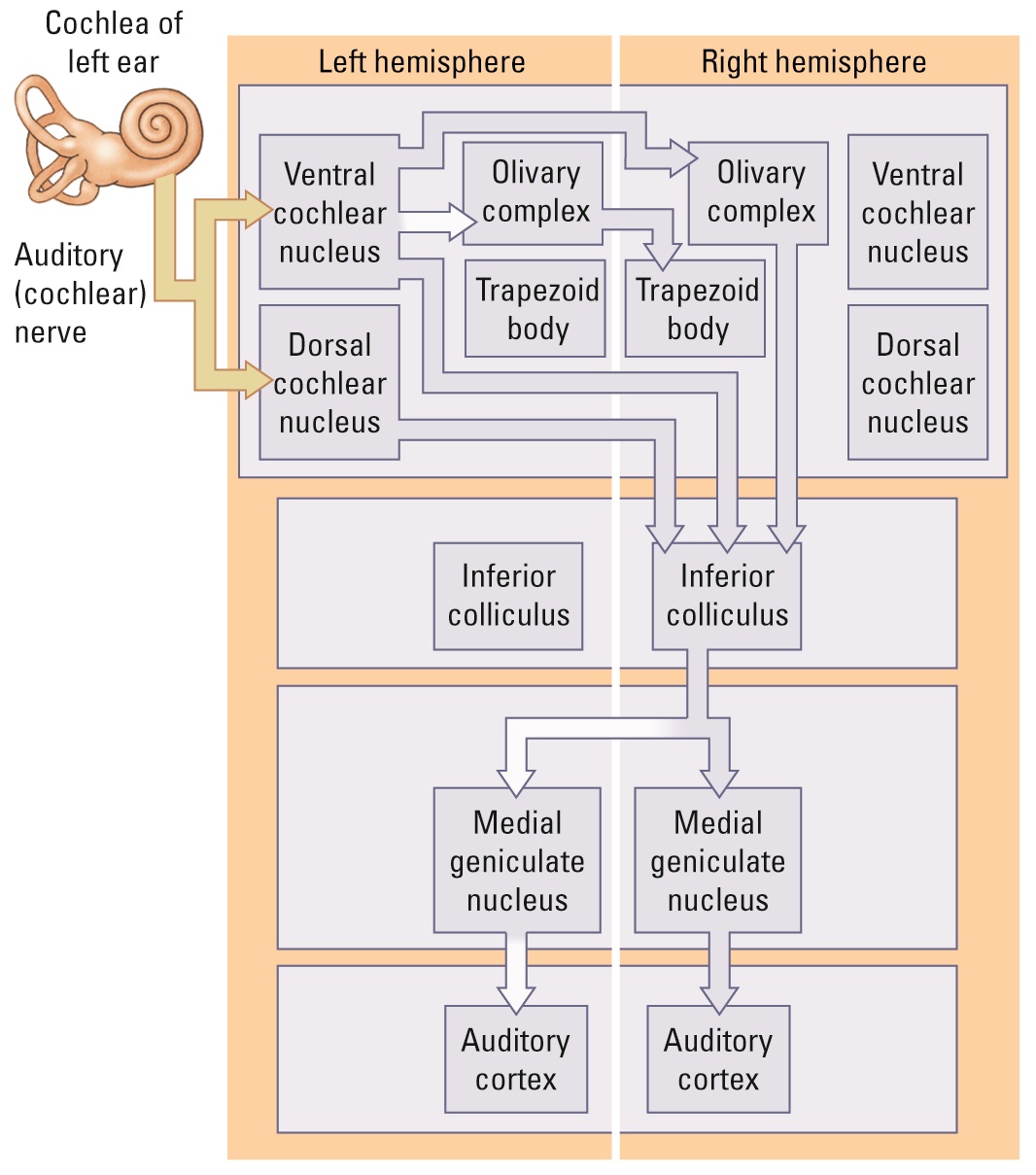
Hindbrain
Midbrain
Thalamus
Cerebral cortex
The pathway from the ear to the cortex goes through several structures. Fill in the missing labels.

Question
qEfXe/5mxUPtWONqz8ri7Q== +m6QjQ/97rv3aYZYusdJQQ== NE9SM8age9dw8xLoFAhqwQ== LV2SyMXwl089eAqtzrLGMQN9Vhg=The auditory cortex is located in the temporal lobes and is most easily observed in cross section. The primary auditory cortex (A1) is located in Heschl’s gyrus and is surrounded by a secondary auditory cortex (A2). Immediately posterior to the primary auditory cortex is the planum temporale.
Play the different sound stimuli to see how each of these regions responds. As you do, compare the size of each structure in the left and right hemispheres. Note that this organization is typical for most (but not all) right-handed people.
Sound stimulus 1: Speech sounds
As you can see in the cross section, the planum temporale is larger in the left hemisphere than in the right hemisphere. In the left hemisphere, the planum temporale forms a speech zone known as Wernicke’s area.
Sound stimulus 2: Musical sounds
In right-handed people, Heschl’s gyrus is larger on the right side than on the left side. Heschl’s gyrus has a special role in analyzing music.
As you can see in the cross section, the auditory cortex is anatomically and functionally asymmetrical: the left hemisphere is specialized for language, and the right hemisphere is specialized for music. Although cerebral asymmetry is not unique to the auditory system, it is most obvious here because for most right-handed people, auditory analysis of speech takes place only in the left hemisphere.
Slide text: Congratulations! You have successfully completed the activity. In this activity, you learned about the structures of the ear and their functions, you learned how sound waves are transduced to a nerve impulse in the inner ear, and you explored the auditory pathway from ear to cortex to learn about the organization of the auditory cortex.
Your instructor may now have you take a short quiz about this activity. Good luck!
